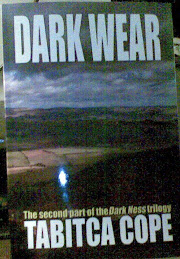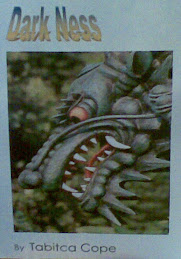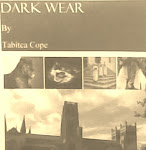Yeti Tales from Climbers
Everest Yeti and other events: Ang Tshering reports
Dec 12, 2007
(MountEverest.net) If you are a frequent Himalaya
climber, you've had your share of Yeti tales. From Messner's much
publicized search expeditions, to the Yeti head in the monastery en
route to Everest BC which in fact is the skull of a monkey.
In
the past weeks, world media have had another Yeti frenzy - with Reuters
this time breaking the news of supposed Yeti tracks found in Nepal.
In a later report, there was also news of a runaway elephant in the
area. Late last week, Ang Tshering shot over a report with his own take
on current events, including the Yeti and a stay with Everest climber Prague mayor Bem who just recently released a book about his eventful climb.
The Yeti
"Recently a team of nine producers from 'Destination Truth' held a press conference in Kathmandu after spending a week in the Khumbu region in search of the Yeti," Ang Tshering writes. "They stated that they had 'discovered footprints th at
merit further investigation.' While the existence of the Yeti is part
of our Sherpa folklore, I have also listened to many theories from
researchers and scholars. Over my lifetime in Nepal
I have listened to many theories about the existence of the Yeti. And I
smile…" "Sherpa herders claim to have made sightings during the winter
and summer season when they take their herd to pasture especially in
Gokyo valley of Everest Region.
While search for the Yeti has been conducted many times in the Nepal
Himalaya during the Spring and Autumn season, maybe it is time to have
similar studies during the Summer and Winter months?"
at
merit further investigation.' While the existence of the Yeti is part
of our Sherpa folklore, I have also listened to many theories from
researchers and scholars. Over my lifetime in Nepal
I have listened to many theories about the existence of the Yeti. And I
smile…" "Sherpa herders claim to have made sightings during the winter
and summer season when they take their herd to pasture especially in
Gokyo valley of Everest Region.
While search for the Yeti has been conducted many times in the Nepal
Himalaya during the Spring and Autumn season, maybe it is time to have
similar studies during the Summer and Winter months?"
Other studies
There are other, less publicized studies ongoing right now, Ang Tshering reports:
"Another type of study was also made very recently by some pioneering Japanese scientists from Keio University, led by Prof. Hiromichi Fukui." "Prof. Fukui and his team set up remote controlled video surveillance equipment that will monitor Imja lake, upstream of the Everest Trail. This surveillance system allows researchers to monitor changes in the lake in real time, allowing early warning systems in case of dangers and also to help further studies to reduce the dangers. These are the sort of research work that we hope to encourage and fund with the Everest Eco-Expedition in 2008."
Early September, Ang Tshering Sherpa, Chairman for Asian Trekking (P) Ltd and President of the Nepal Mountaineering Association, flew to Lhasa for a meeting with CMA & CTMA, in an event attended by high level delegates from Beijing and Lhasa.During the summit, a special banquet was held in honor of Asian Trekking and NMA, hosted by the vice chairman of Tibet autonomous government. As Asian Trekking is the official GSA for CTMA, the agency asked Ang Tshering to be their mouthpiece; and forward any news and updates regarding mountaineering in Tibet and China."It will be my great pleasure and privilege to keep the mountaineering community informed," Ang Tshering said, stating that both organizations will now work close together to effectively and efficiently exchange and provide information.
"Recently a team of nine producers from 'Destination Truth' held a press conference in Kathmandu after spending a week in the Khumbu region in search of the Yeti," Ang Tshering writes. "They stated that they had 'discovered footprints th
 at
merit further investigation.' While the existence of the Yeti is part
of our Sherpa folklore, I have also listened to many theories from
researchers and scholars. Over my lifetime in Nepal
I have listened to many theories about the existence of the Yeti. And I
smile…" "Sherpa herders claim to have made sightings during the winter
and summer season when they take their herd to pasture especially in
Gokyo valley of Everest Region.
While search for the Yeti has been conducted many times in the Nepal
Himalaya during the Spring and Autumn season, maybe it is time to have
similar studies during the Summer and Winter months?"
at
merit further investigation.' While the existence of the Yeti is part
of our Sherpa folklore, I have also listened to many theories from
researchers and scholars. Over my lifetime in Nepal
I have listened to many theories about the existence of the Yeti. And I
smile…" "Sherpa herders claim to have made sightings during the winter
and summer season when they take their herd to pasture especially in
Gokyo valley of Everest Region.
While search for the Yeti has been conducted many times in the Nepal
Himalaya during the Spring and Autumn season, maybe it is time to have
similar studies during the Summer and Winter months?"Other studies
There are other, less publicized studies ongoing right now, Ang Tshering reports:
"Another type of study was also made very recently by some pioneering Japanese scientists from Keio University, led by Prof. Hiromichi Fukui." "Prof. Fukui and his team set up remote controlled video surveillance equipment that will monitor Imja lake, upstream of the Everest Trail. This surveillance system allows researchers to monitor changes in the lake in real time, allowing early warning systems in case of dangers and also to help further studies to reduce the dangers. These are the sort of research work that we hope to encourage and fund with the Everest Eco-Expedition in 2008."
Early September, Ang Tshering Sherpa, Chairman for Asian Trekking (P) Ltd and President of the Nepal Mountaineering Association, flew to Lhasa for a meeting with CMA & CTMA, in an event attended by high level delegates from Beijing and Lhasa.During the summit, a special banquet was held in honor of Asian Trekking and NMA, hosted by the vice chairman of Tibet autonomous government. As Asian Trekking is the official GSA for CTMA, the agency asked Ang Tshering to be their mouthpiece; and forward any news and updates regarding mountaineering in Tibet and China."It will be my great pleasure and privilege to keep the mountaineering community informed," Ang Tshering said, stating that both organizations will now work close together to effectively and efficiently exchange and provide information.




















